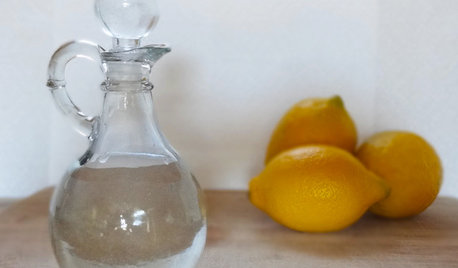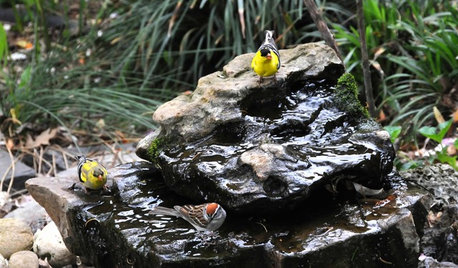Homemade vinegar - finishing?
bejay9_10
18 years ago
Related Stories

HOUSEKEEPINGVinegar and Voilà: Clean Your House the Natural Way
Ditch the commercial cleaners for nontoxic, inexpensive and versatile white vinegar
Full Story
OUTDOOR PROJECTSBring In the Birds With a Homemade Bubble Rock
An avian expert from Southern Indiana shows how to make a burbling fountain that migrating birds will love
Full Story
DIY PROJECTSRevive Your Space With a Homemade Pillow Cover
Give your bed or sofa a new look with a little fabric and some simple sewing skills
Full Story
BATHROOM DESIGNA Crash Course in Bathroom Faucet Finishes
Learn the pros and cons of 9 popular faucet finishes
Full Story
KITCHEN DESIGNStylish New Kitchen, Shoestring Budget: See the Process Start to Finish
For less than $13,000 total — and in 34 days — a hardworking family builds a kitchen to be proud of
Full Story
REMODELING GUIDESFinish Your Remodel Right: 10 Tasks to Check Off
Nail down these key details to ensure that everything works properly and you’re all set for the future
Full Story
KITCHEN DESIGNKitchen Luxuries: The Wood-Fired Pizza Oven
If you love homemade pizza and are (ahem) rolling in dough, a wood-burning oven may be just the right kitchen investment
Full Story
BATHROOM DESIGN4 Secrets to a Luxurious Bathroom Look
Give your bathroom a finished feel with a few splurges and budget-stretching moves
Full Story
REMODELING GUIDESBathroom Remodel Insight: A Houzz Survey Reveals Homeowners’ Plans
Tub or shower? What finish for your fixtures? Find out what bathroom features are popular — and the differences by age group
Full Story
KITCHEN DESIGNKitchen of the Week: Elegant Updates for a Serious Cook
High-end appliances and finishes, and a more open layout, give a home chef in California everything she needs
Full Story


melva02
bejay9_10Original Author
Related Discussions
Hard Cider into Apple Cider Vinegar
Q
Homemade vinegar?
Q
Homemade vinegar from grape skins
Q
White vinegar vs Finish Jet-Dry rinse aid?
Q
david52 Zone 6
ksrogers
melva02
bejay9_10Original Author
ksrogers
melva02
led_zep_rules
bejay9_10Original Author
mellyofthesouth
ksrogers
david52 Zone 6
ksrogers
melva02
bejay9_10Original Author
mellyofthesouth
ksrogers
melva02
ksrogers
Sarah_Bella
bejay9_10Original Author
david52 Zone 6
Sarah_Bella
david52 Zone 6
melva02
bejay9_10Original Author
ksrogers
readinglady
victrola
melva02
mellyofthesouth
ksrogers
victrola
ksrogers
princesspez
John__ShowMe__USA
bejay9_10Original Author